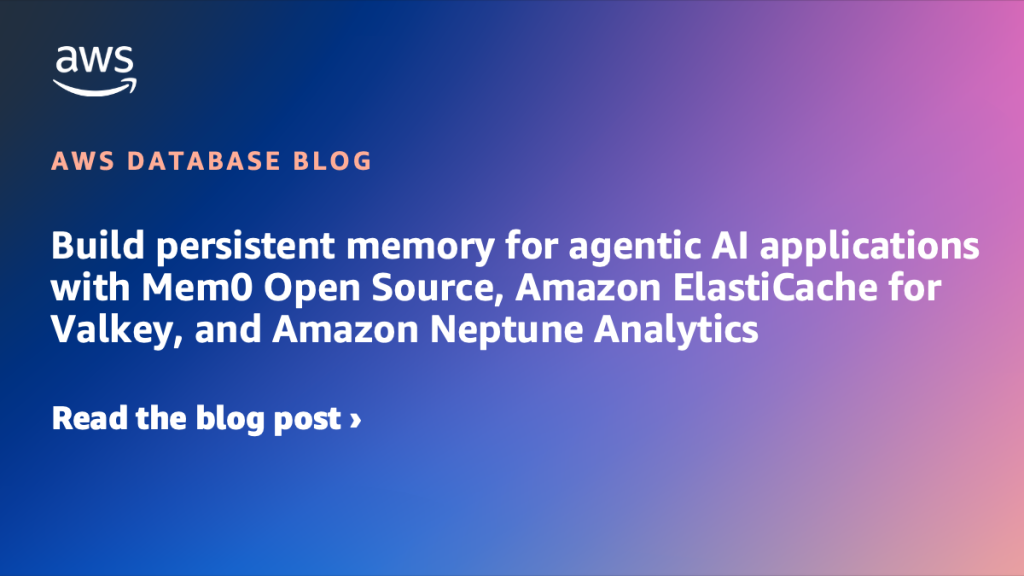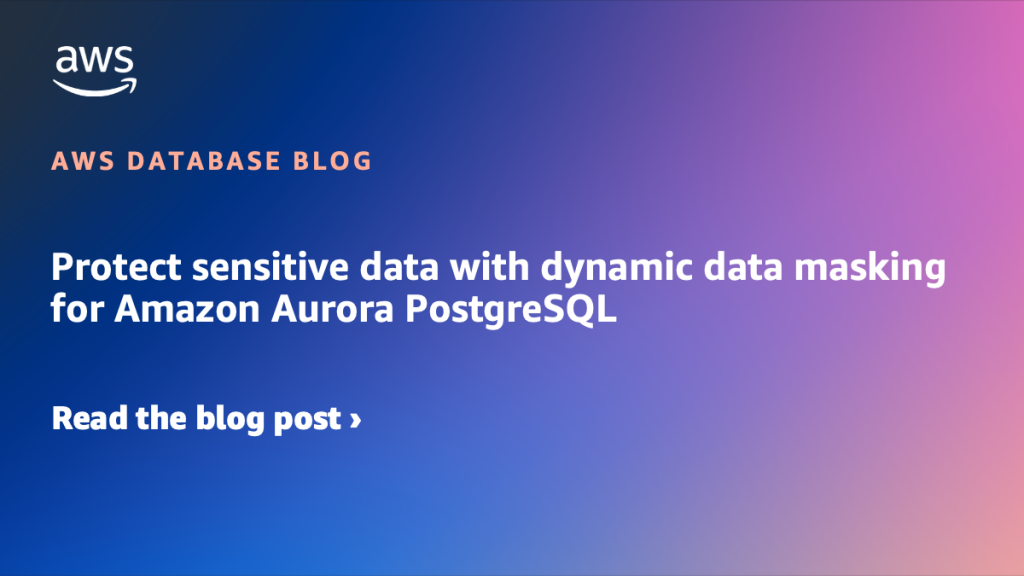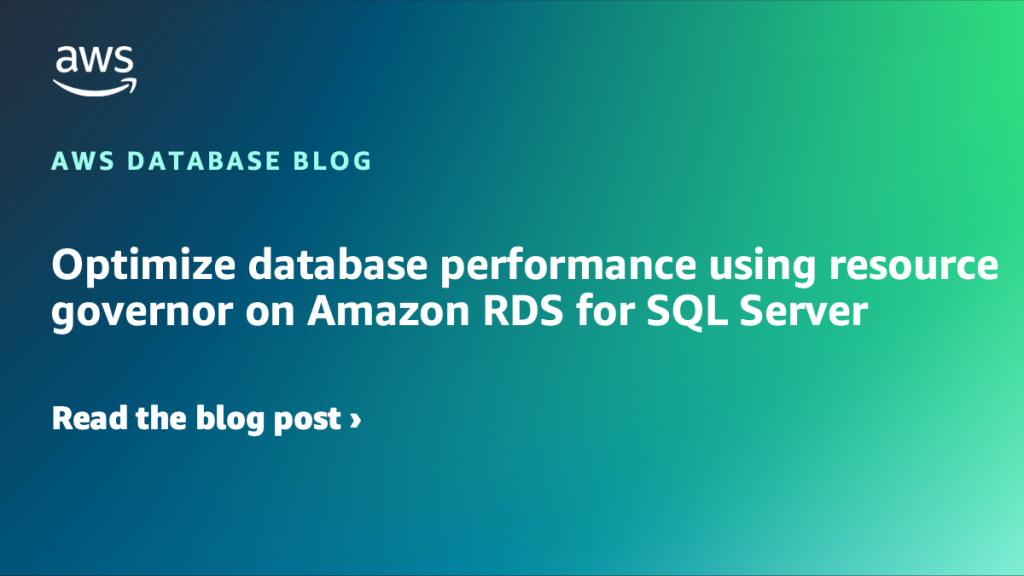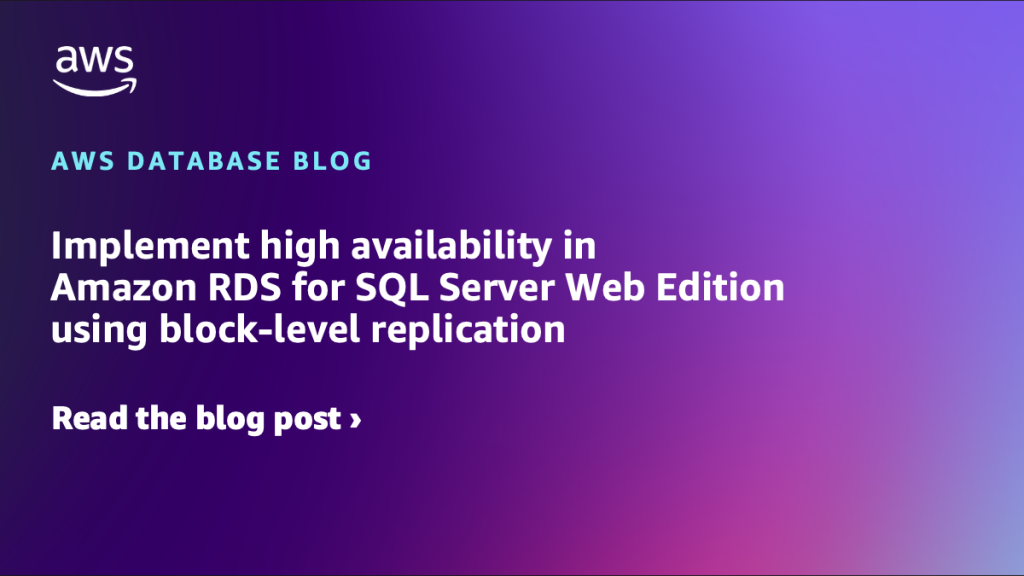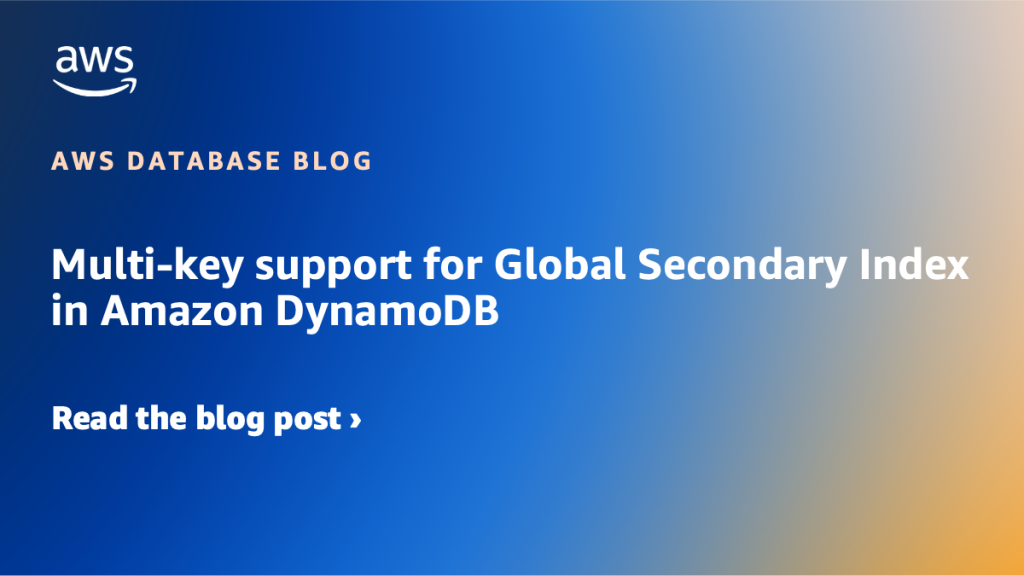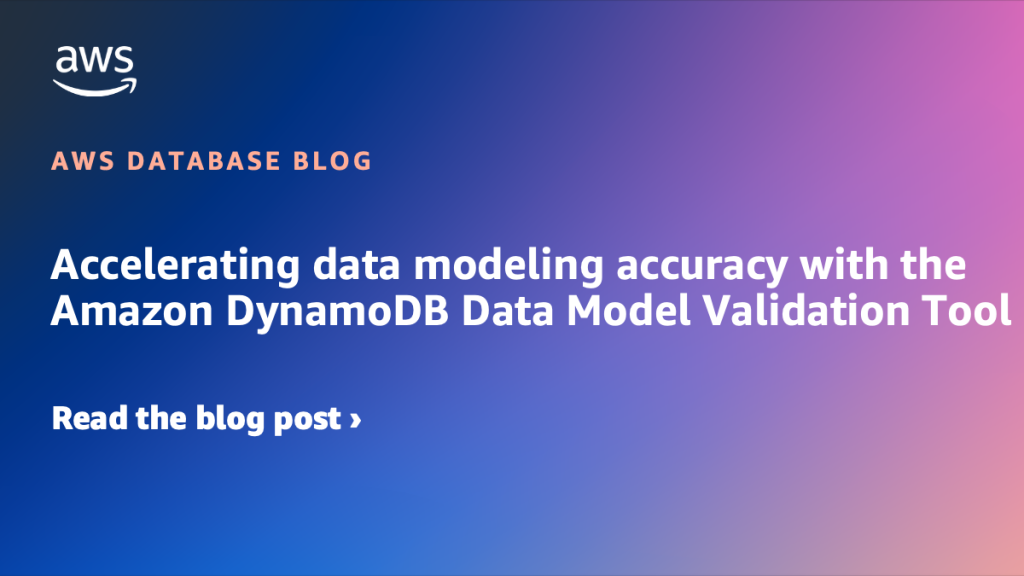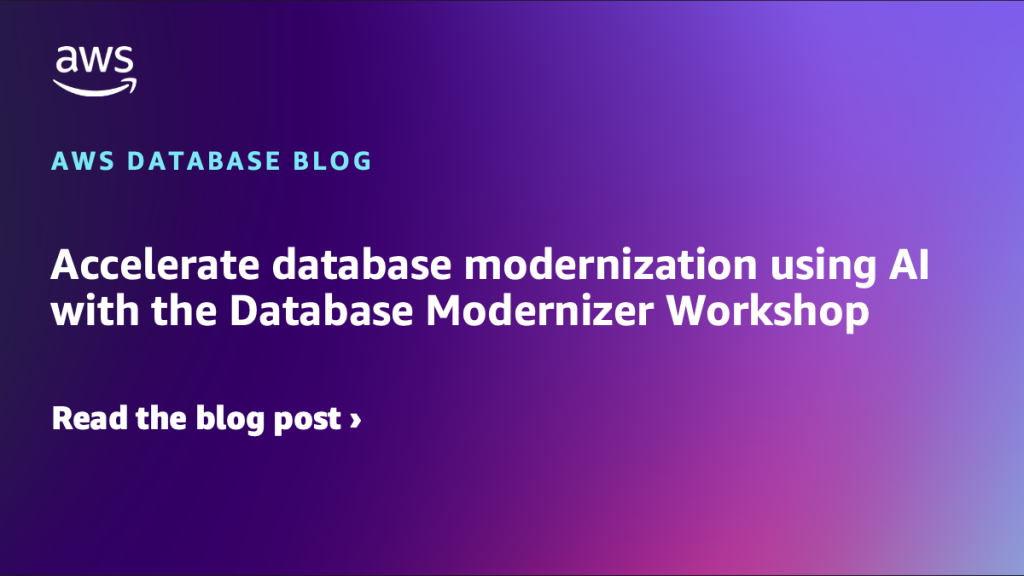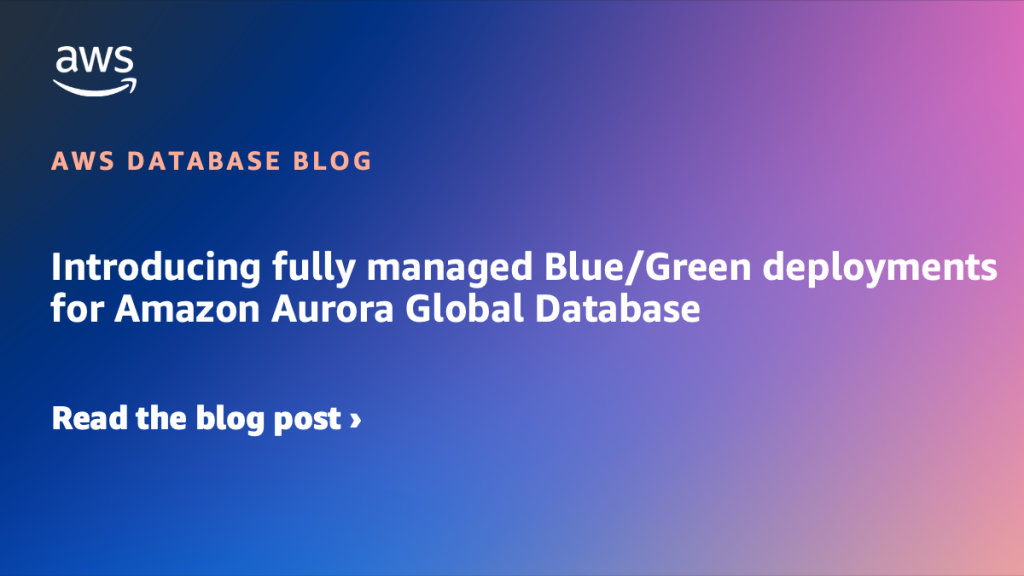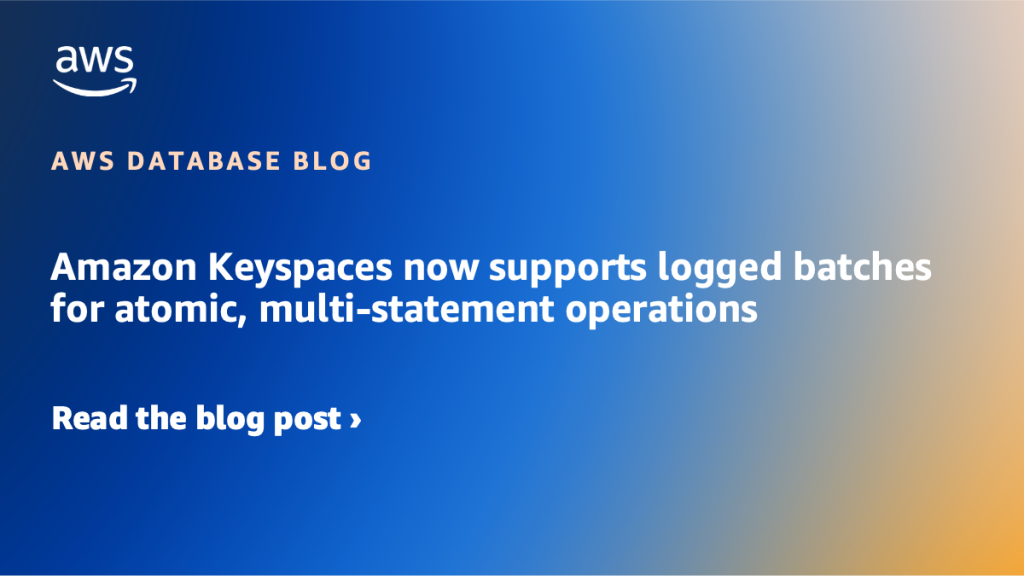AWS Database Blog
Category: Announcements
Build persistent memory for agentic AI applications with Mem0 Open Source, Amazon ElastiCache for Valkey, and Amazon Neptune Analytics
Today, we’re announcing a new integration between Mem0 Open Source, Amazon ElastiCache for Valkey, and Amazon Neptune Analytics to provide persistent memory capabilities to agentic AI applications. This integration solves a critical challenge when building agentic AI applications: without persistent memory, agents forget everything between conversations, making it impossible to deliver personalized experiences or complete multi-step tasks effectively. In this post, we show how you can use this new Mem0 integration.
Protect sensitive data with dynamic data masking for Amazon Aurora PostgreSQL
Today, we are launching dynamic data masking feature for Amazon Aurora PostgreSQL-Compatible Edition. In this post we show how dynamic data masking can help you meet data privacy requirements. We discuss how this feature is implemented and demonstrate how it works with PostgreSQL role hierarchy.
Optimize database performance using resource governor on Amazon RDS for SQL Server
You can now use resource governor with Amazon RDS for SQL Server Enterprise Edition to optimize your database performance by controlling how compute resources are allocated across different workloads. This post shows you how to optimize your database performance using resource governor on Amazon RDS for SQL Server. We walk you through the step-by-step process of enabling and configuring the feature, including how to set up resource pools, create workload groups, and implement classifier functions for effective resource management.
Implement high availability in Amazon RDS for SQL Server Web Edition using block-level replication
Amazon RDS for SQL Server has enhanced SQL Server 2022 Web Edition by introducing high availability through block-level replication in Multi-AZ deployments. With this release, you can quickly set up and maintain highly available databases while significantly reducing operational overhead. In this post, we discuss the benefits of block-level replication and how to get started. For more information, see Licensing Microsoft SQL Server on Amazon RDS.
Multi-key support for Global Secondary Index in Amazon DynamoDB
Amazon DynamoDB has announced support for up to 8 attributes in composite keys for Global Secondary Indexes (GSIs). Now, you can specify up to four partition keys and four sort keys to identify items as part of a GSI, allowing you to query data at scale across multiple dimensions. In this post we show you how to design similar data models more efficiently using Global Secondary Indexes with the additional attribute support in composite keys and provide examples of DynamoDB data models with reduced complexity.
Accelerating data modeling accuracy with the Amazon DynamoDB Data Model Validation Tool
Today, we’re introducing the Amazon DynamoDB Data Model Validation Tool, a new component of the MCP server that closes the loop between generation, evaluation, and execution. The validation tool automatically tests generated data models against Amazon DynamoDB local, refining them iteratively until every access pattern behaves as intended.
Accelerate database modernization using AI with the Database Modernizer Workshop
In this post, we show how you can use the Database Modernizer workshop to accelerate your database modernization journey from MySQL to Amazon DynamoDB. Traditional approaches to migrating from relational databases to NoSQL solutions like DynamoDB can take several months, requiring extensive expertise in data modeling, application refactoring, and migration strategies. The Database Modernizer workshop, which can be scheduled by your account team as part of the Amazon DynamoDB Immersion Day program, uses AI to help you complete database modernization projects in days instead of months.
Introducing fully managed Blue/Green deployments for Amazon Aurora Global Database
Today, we’re introducing Amazon RDS Blue/Green support for Aurora Global Database, enabling database upgrades and modifications with minimal downtime. With just a few steps, you can create a blue/green deployment that establishes a fully managed staging (green) environment mirroring the existing production (blue) environment, including the primary and its associated secondary regions of the Global Database.
Amazon DocumentDB (with MongoDB compatibility) introduces new query planner that delivers up to 10x performance improvements
On Oct 28, 2025, Amazon DocumentDB (with MongoDB compatibility) introduced a new query planner (NQP) to improve database performance and stability. The redesigned architecture uses improved cost estimation techniques and optimized algorithms for smarter query plan selection.
Amazon Keyspaces now supports logged batches for atomic, multi-statement operations
Today, we are announcing Amazon Keyspaces (for Apache Cassandra) support for logged batches, a powerful feature that brings atomic, all-or-nothing write operations to your Apache Cassandra-compatible workloads. In this post, we explore the benefits of logged batches, demonstrate how to set up and run them, and discuss important considerations when using logged batches with Amazon Keyspaces.
